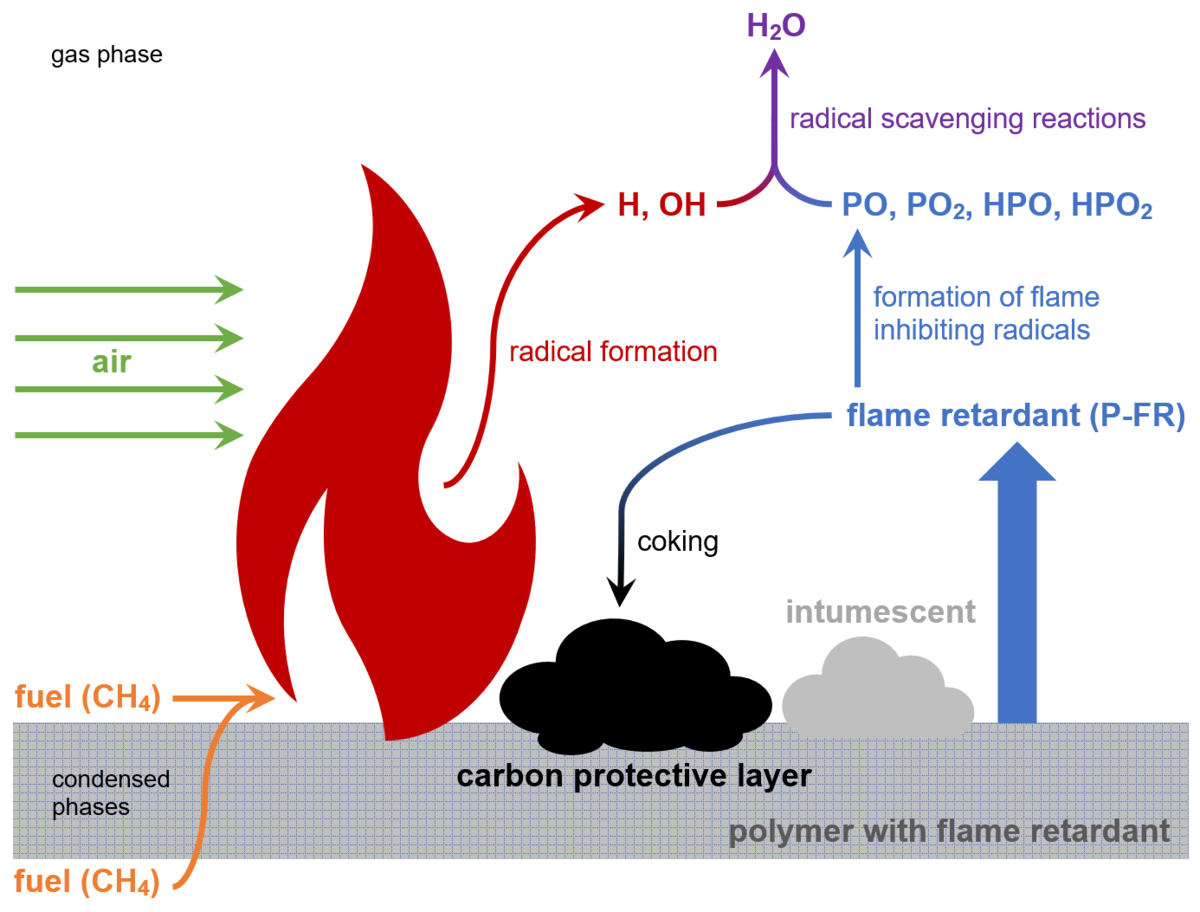Design of flame safety concepts
Background: Modeling and numerical simulation of multiphase chemical reactions in complex application areas are among the greatest challenges of our time. Through precise predictions of physicochemical processes in the gas, liquid, and solid phase, operational processes can be optimized and long-term damage prevented. Application-specific models can thus be an aid to increased efficiency and longevity. Especially in the area of combustion and emission control, multiphase flows including chemical reactions are dominant processes in technical processes. Knowledge of these processes also plays a crucial role in the design of flame safety concepts.
Project: The aim of this project is to describe in detail the functionality and mechanisms of various selected phosphorus-containing flame retardants (P-FRs) in multiphase combustion processes. Such holistic numerical considerations have not been carried out so far, but are of the highest importance to understand the mode of action of P-FRs and can be used in the development and optimization of further P-FRs.
All simulations in this project are performed with the software package DETCHEM with the former developed MPTR model. It is an 0D multiphase tank reactor model with one gas phase, several liquid or solid phases, and a catalytic surface and is therefore ideally suited for simulating the present multiphase combustion process.
The focus is on the development of the chemical kinetic reaction mechanisms for the various processes in the individual phases (see figure). Initially, partial mechanisms for the polymer (an unsaturated polyester resin) and the various flame retardants (DMMP, TMP, TPP, and DEPAl) are developed based on literature data, conclusions by analogy and experimental data from other projects within the CRC TRR150. Subsequently, these mechanisms are linked, including validation and optimization, so that the interactions between polymer, flame retardant, and fuel can be examined more closely. Information about mechanistic aspects and dominating species and reactions can then help to understand the functionality and mechanisms of action of phosphorus flame retardants and thus make an important contribution to the development and improvement of future flame retardants.
Co-workers: Corina Janzer
Collaboration: TU Darmstadt, Fraunhofer LBF, TU Dortmund
Funding: CRC TRR 150, German Research Foundation (DFG)


